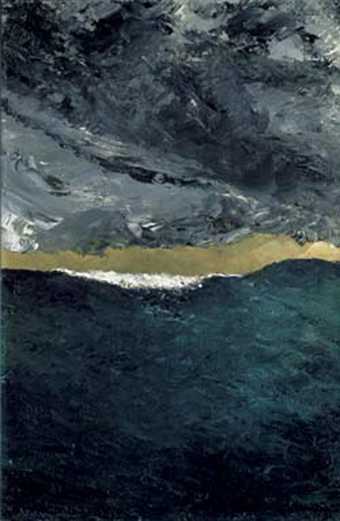The Swedish playwright August Strindberg was insatiably curious – a dabbler of genius who spoke five languages and devoted himself to scientific research and even alchemy as much as to writing. He also took a great interest in photography – an intermittent but constant presence in his life from 1886 to 1907, corresponding to two different kinds of motivation.
On the one hand, there were the photographic experiments that were an extension of his literary preoccupations. So when, in 1886, Strindberg photographed the French countryside – sometimes even from the train window – and then made a series of self-portraits and family scenes, it was with a view to illustrating the books he was writing at the time: a study of peasant life, Among French Peasants 1886, and his autobiography The Son of a Servant 1886. Together with Lewis Carroll, Emile Zola, George Bernard Shaw and Léonid Andreïev, he was one of the very first writers to engage in the fruitful dialogue between photography and literature. At the very end of the nineteenth century, and then at the beginning of the twentieth, Strindberg also carried out a large number of photographic experiments more in tune with his scientific investigations. In the 1890s, he used gelatin silver bromide plates to study the diffraction of light, before exploring the colour capabilities of photography. He captured the imprint of snow crystals on the photographic plate and then, moving from the infinitely small to the infinitely large, he tried to photograph the sun, the moon, the stars and the clouds. He took photographs without a lens and constructed a large-format camera that enabled him to obtain life-size images of faces. In Berlin, during the summer of 1892, he attempted to photograph the soul.
If Strindberg’s archives are full of notes, newspaper cuttings or sketches about this second level of scientific photographic experiments, sadly very few pictures have been handed down to us. The most significant surviving sets involve research into the capturing of crystalline formations, and astronomic photography. Of the first series, made between 1892 and 1896, the Royal Library of Stockholm has preserved six small prints obtained by placing the sensitive surface of the plate directly against a piece of glass covered with crystals of frost or fallen snow. It is hard to know exactly how he managed to make such pictures. In the press of the day, various articles described similar experiments, as well as their advantages for the scientific study of crystal formations, for making ornamental motifs, or just for simple amusement. For Strindberg, these ‘crystallographs’, as he called them, were a way of verifying his analogical, monist conception of the universe. He had noticed that the structure of ice crystals strangely resembled the branching forms of plants, and wondered about the basis of such a similarity:
Could water in vapour form, having passed through plants a number of times, have taken and kept the imprint of their shape? Could that same water, leaving the primitive state of its crystalline shape, be capable of developing and creating free shapes in crystal formations? Did water give plants their shape, or is it the other way round?
At around the same time, Strindberg tried his hand at astronomic photography. Perfectly informed about the latest advances in the discipline, and an avid reader of journals and books on the subject, he was well aware that the difficulty of the exercise lay in the faint luminosity of the stars, along with the poor sensitivity of photographic plates. Just as music being played in the next room can be heard more easily when the door is open, Strindberg believed that light would be more intense if the obstacles between the source and the receiver could be removed. He decided, therefore, to dispense with the lens of his camera, convinced that ‘the effect of the rays must be stronger once freed from the work of passing through a medium such as glass. Then, following his analogical train of thought, he reasoned that by getting rid of the camera itself, the intensity of the light would only be reinforced. This led him to the idea – in the face of all scientific rationality – of holding a photographic plate up to the starry dome, all on its own, submerged in the developing bath, in order to capture the luminous manifestations of the celestial bodies. About ten ‘celestographs’ obtained in this fashion were sent to the president of the Astronomical Society of France, Camille Flammarion. Convinced that he had discovered a revolutionary method of photographing the sky, Strindberg could hardly have suspected that the clouds of white patches covering his prints were not in fact stars, but silver micro-oxidations produced as a result of poor handling of the material. He was clearly unaware of the old adage that warns against the illusions of an overeager imagination: ‘He who impatiently awaits a knight should not mistake his heartbeats for the sound of hoofs.’

